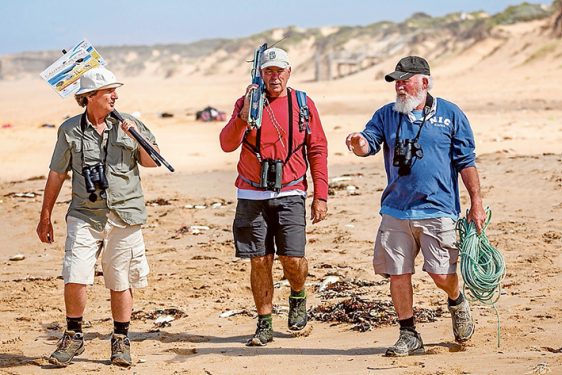
THEY may look like balls of fluff standing on legs thinner than matchsticks, but there are many hands willing to help the endangered hooded plover.
It is a bird that nests precariously close to the ocean’s edge and lays a camouflaged egg that is hard to discern from its surroundings on the sand.
Also prey to many natural enemies the odds seem stacked against the hooded plover, but as its annual nesting season gets underway
On Monday members of the Friends of the Hooded Plover group were at Gunnamatta, driving fencing posts into the sand and unrolling wire to keep unwary or careless beachgoers away from nesting birds.
Flotsam left behind by the latest high tides show just how close the nests are to being swept away.
But year after year the plovers return to this windswept beach, albeit in ever decreasing numbers.
Although dogs are banned at Gunnamatta, the chicks and eggs are sought out morsels to foxes, cats, seagulls, magpies and ravens.
The previous Friday the Hastings-based Willum Warrain Aboriginal Association held a workshop to make shelters for the chicks.
The workshop was sponsored by the Port Phillip and Western Port Catchment Management Authority and involved Indigenous people and Landcare groups.